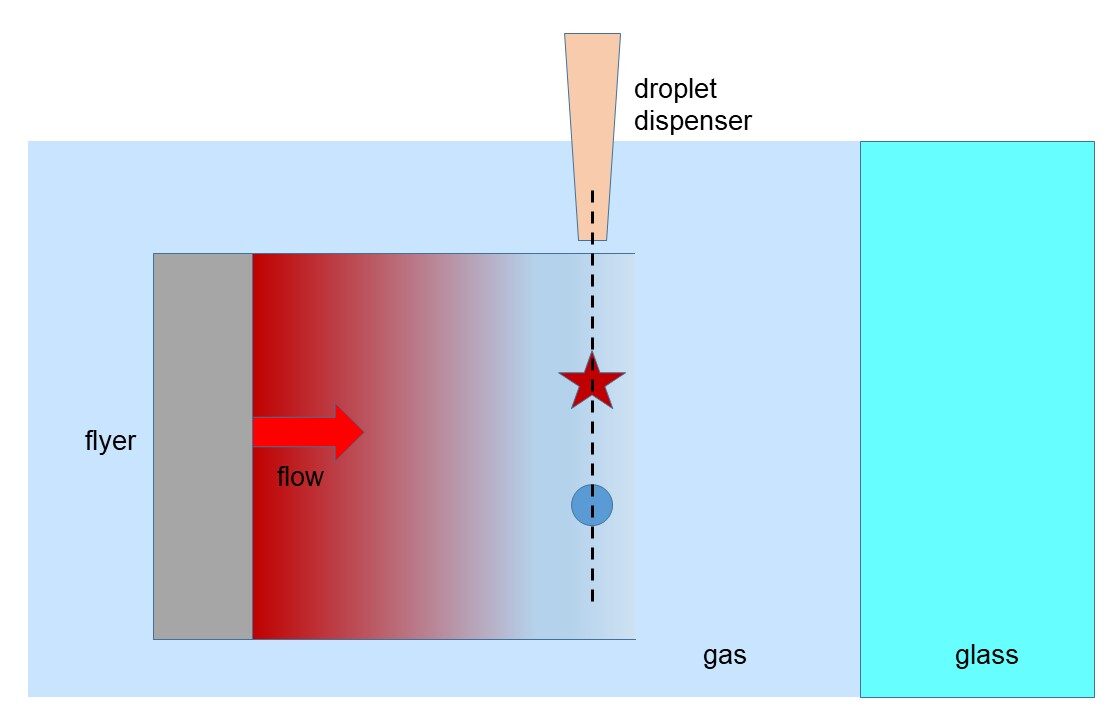Pulsed detonation engine
A pulse detonation engine (PDE) uses detonation waves to combust the fuel and oxidizer mixture. The engine is pulsed because the mixture must be renewed in the combustion chamber between each detonation wave and the next. Theoretically, a PDE can operate from subsonic up to a hypersonic flight speed of roughly Mach 5.
In a PDE, a detonation is produced in a gas that may be air or air enriched with oxygen. The detonation front interacts with fuel droplets which themselves ignite when the oxygen streams by, amplifying the shock. This is roughly analgous to the way hot spots evolve into detonations in solid PBX, so the methods we have developed for solids can be extended to this mixed gas-liquid phase problem.
One fundamental problem involves understanding how the fuel droplets ignite, explode and sustain the shock front. We are building an apparatus to study these effects, which is depicted below.

In this arrangement, the flyer plate is launched into air or other gas mixtures, as opposed to a vacuum launch that we usually use. Compressed gas piles up on the hypersonic flyer plate. A computer-controlled droplet dispenser is used to inject a fuel droplet shortly before the flyer plate is launched while our usual suite of diagnostics including nanosecond video is used to image the interaction. We do not know if the droplets are ignited homogeneously or inhomogeneously. Homogeneously means each droplet ignites shortly after the air shock arrives. Inhomogeneously means some droplets ignite and they cause the other droplets to ignite. When the droplets ignite they create a complex flow pattern in the gas shock. We plan to build and develop this apparatus and then introduce methods to visualize the perturbed gas shock flow field. Holography is one possibility. Another is to use a pulsed nozzle to inject emissive nanoparticles whose trajectories can be followed (particle-imaging velocimetry or PIV).

